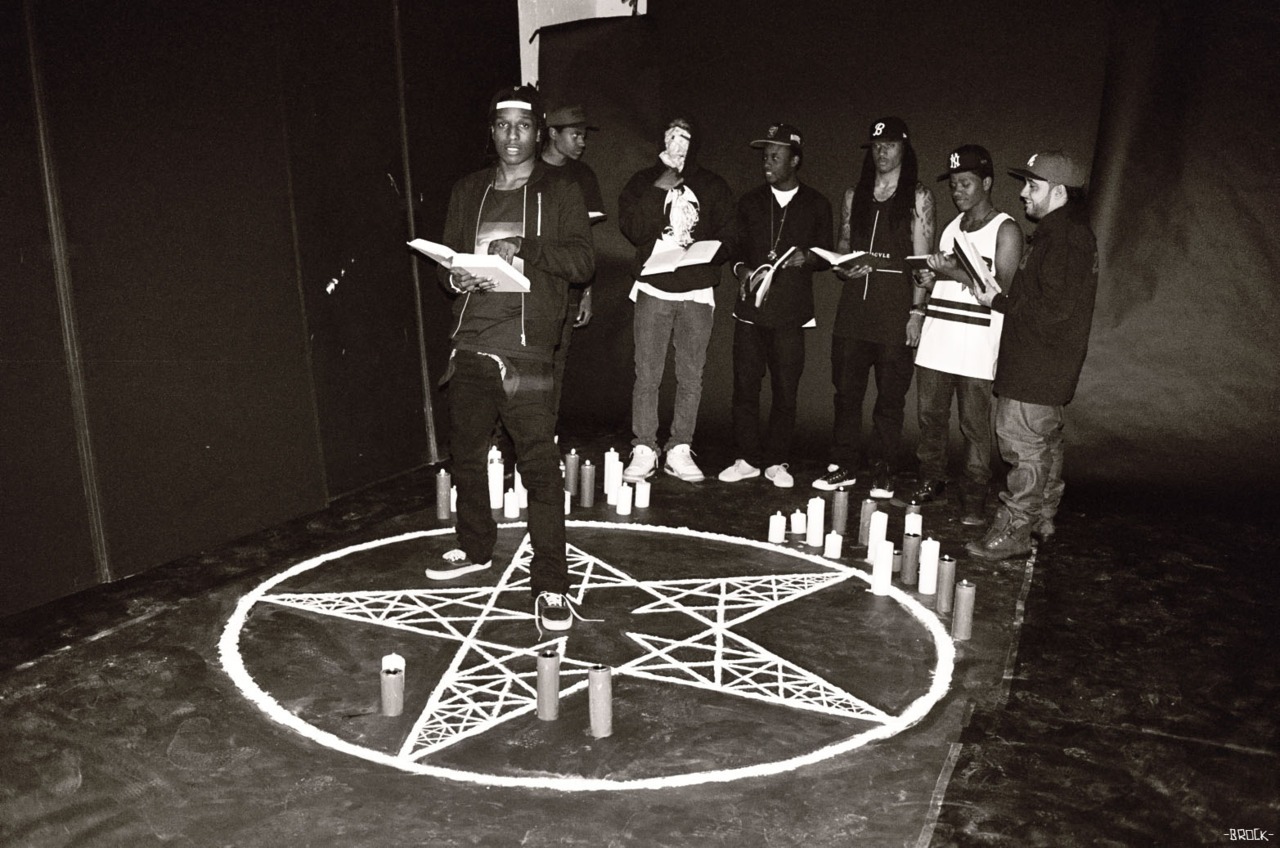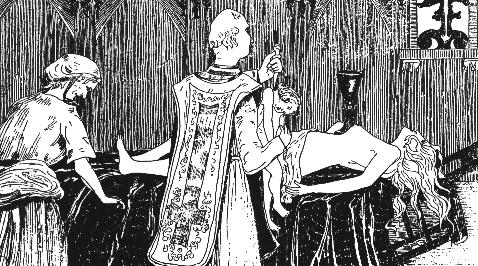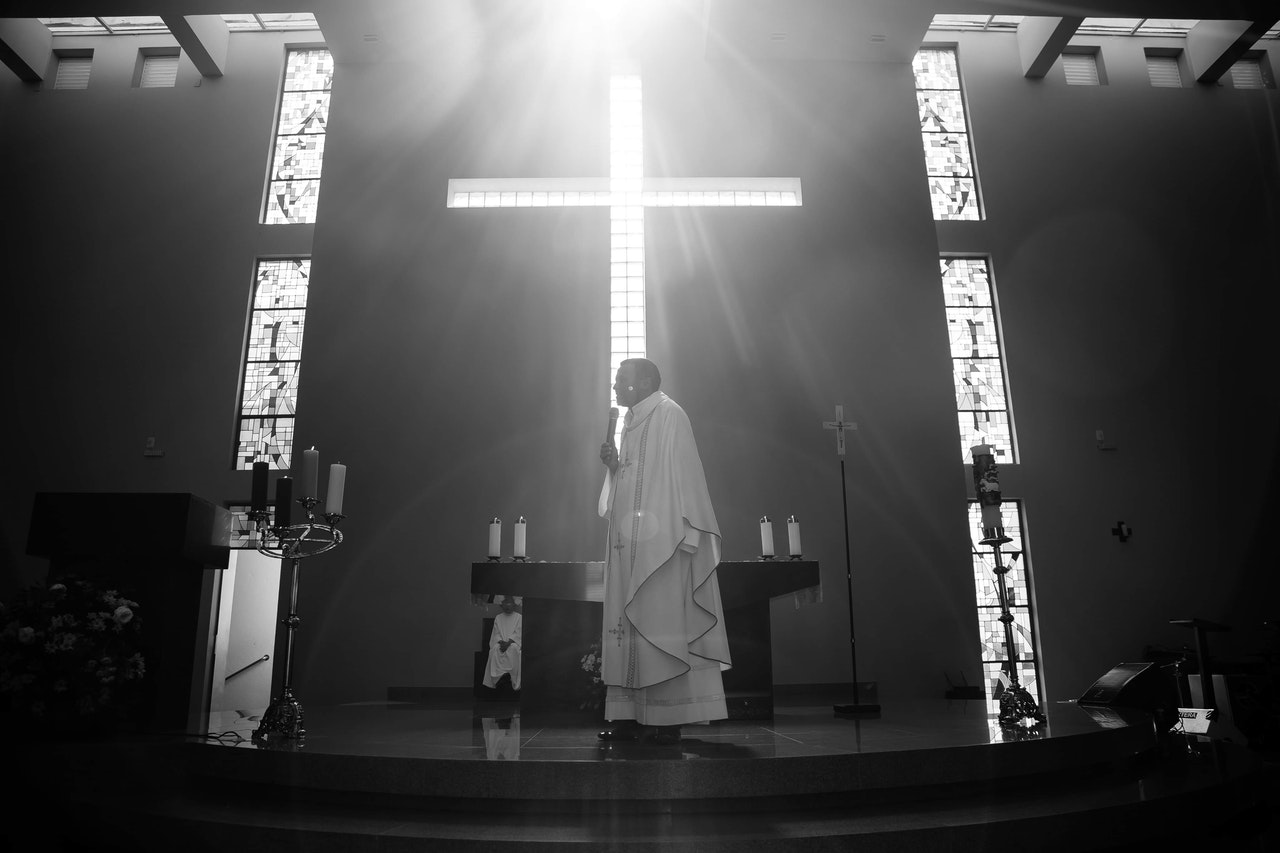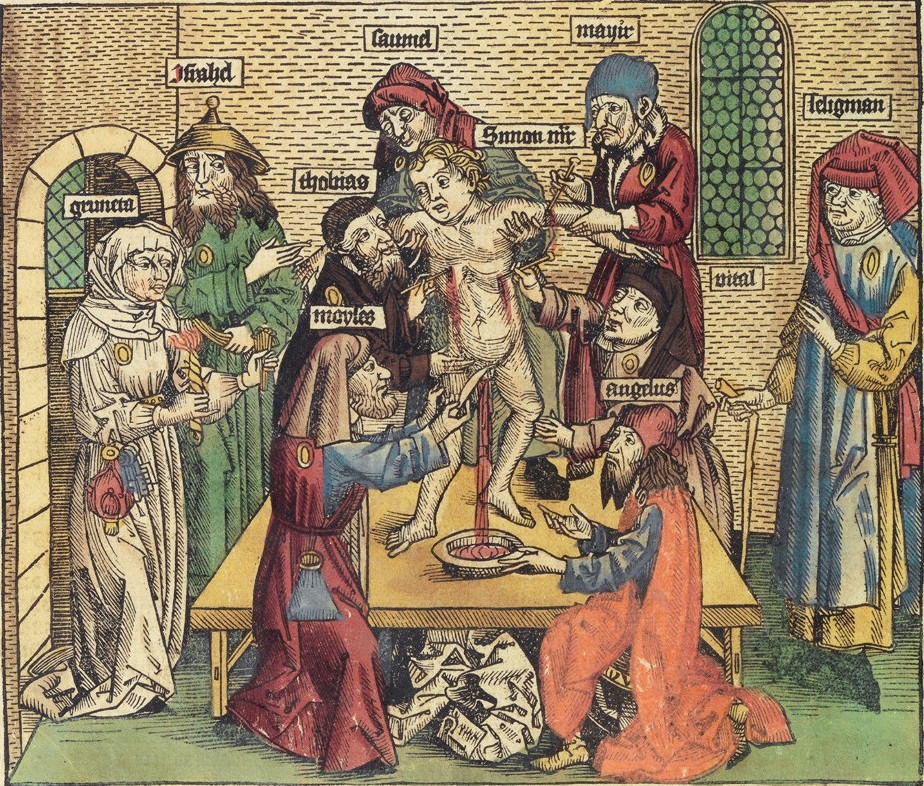Satanic Panics

By Thomas Lambert
Staff Writer
27/12/2020

A Satanist group (Picture Credit: Matthew Vicenta)
“Evil is an effective agent, a living spiritual being, perverted and perverting. A terrible reality. One of the greatest needs is a defense from the evil which is called the Devil.”
So read the epigraph, poached from a 1972 allocution by Pope Paul VI, of the book that was about to take the United States by storm. The year was 1980. A B-movie actor called Ronald Reagan had just surfed to the Republican nomination on a wave of deregulatory and evangelical zeal. A new TV channel called CNN flashed images of Iranian hostages, an erupting Mount St Helens, the murderer of John Lennon, across the nation’s screens. Against this backdrop, Michelle Remembers, a book by one Michelle Smith, chronicling her years of psychotherapy with Canadian psychiatrist Lawrence Pazder, may have seemed comparatively drab. And yet something in Pazder’s account touched something deep in the American psyche. Michelle Remembers triggered a moral panic that gripped Middle America with a ferocity not seen since Salem, and didn’t let go for over a decade.
In 1976, after three years of being treated for depression by Pazder, Smith told him she had something important to say. This was “something new,” she said, something “different.” But the words wouldn’t come. Instead, Pazder wrote, she began to scream for 25 minutes, uninterrupted, before lapsing, exhausted, into the babbling “voice of a five-year-old.” Pazder’s interest was piqued. Over the next four years, the therapy sessions grew more and more intense: Pazder frequently put Smith into states of “deep hypnosis,” in a bid to “unearth” a wellspring of repressed memory.
What emerges over the next 300 pages of Michelle Remembers is shocking. Starting at the age of five, Smith recalled years of abuse at the hands of a tenebrous organization called the “Church of Satan,” based in Victoria, British Columbia. The account reads almost like a thriller, with a distinct pattern of escalation: torture, confinement in cages, and sexual assault give way to human sacrifices, anointments with the blood of disemboweled animals. The last 30 pages are positively Miltonic: Smith said that in 1955 she was the centerpiece of a frenzied 81-day ritual in which Satan himself was summoned, and one by one, Jesus, the Virgin Mary, and the Archangel Michael descended, erasing scars and bowdlerizing memories. There they sat, sequestered in Smith’s unconscious – “until the time was right.”

Woodcut depicting a black mass
The book was published in 1980 to great sensation. Pazder and Smith soon secured a $100,000 advance for the first edition, quickly followed by another $242,000 for the paperback. People magazine’s piece on the novel ahead of its publication became one of its most successful features that year; the National Enquirer wasted no time serializing an abridged version. By the second quarter of 1981, Michelle Remembers had been selected by the US Literary Guild and Doubleday Book Club as a “book of the year” – and there was even talk of a movie deal. Without quite realizing it, Pazder and Smith had just started one of the strangest, most controversial rumors in American history, and one which still haunts the national memory.
Then in 1983, Judy Johnson, a parent at the McMartin Preschool in Manhattan Beach, California, contacted the police. Noticing that her young son had been suffering from painful bowel movements, Johnson leveled a volley of abuse claims against a number of staff at McMartin. In particular, she alleged that her son had been sodomized by her estranged husband, with the help and participation of McMartin teacher Ray Buckey. Rumors began to carom round the school, and teachers expressed concern. On 8th September, a form letter was circulated to around 200 parents:
…Please question your child to see if he or she has been a witness to any crime or if he or she has been a victim. Our investigation indicates that possible criminal acts include: oral sex, fondling of genitals, buttock or chest area, and sodomy, possibly committed under the pretense of “taking the child’s temperature.” Also [sic] photos may have been taken of children without their clothing…
There was a flurry of responses. Several children claimed to be witnesses or victims. At the behest of the county police force, hundreds of children were taken for examination and questioning by the Children’s Institute International (CII), a Los Angeles-based abuse therapy clinic. The questions, overseen by social worker Kee McFarlane, were later judged to be highly suggestive, and involved now-discredited techniques like re-enactments with anatomical dolls. Questionings were accompanied by medical examinations of the children’s genitals and buttocks which sought evidence of penetration. The CII’s judgement was as swift as it was damning. 360 children, McFarlane concluded, had been subject to repeated sexual abuse in McMartin, and on March 22, 1984, Ray Buckey, three members of his family associated with McMartin, and three more teachers – Mary Ann Jackson, Betty Raidor, and Babette Spitler – were charged with 115 counts of child abuse.
Trials began in 1987. By this time, Judy Johnson was dead: hospitalized for paranoid schizophrenia a year after making the first allegations, she finally succumbed to chronic alcoholism in 1986. Yet the sheer weight of testimony garnered by the CII forced the trials to go ahead anyway. Under oath, the witness statements and allegations grew more and more bizarre. There were reports of secret tunnels under the school, orgies at car washes, children flushed down toilets, a strange game called “naked movie star,” where children were supposedly photographed by Buckey and his co-conspirators in the nude. Most striking, though, was the way testimonies began to converge on the supernatural. The teachers were witches, Satanists; they could fly and burrow underground like moles. One child was convinced that Buckey had two main co-conspirators: Satan himself and the action movie star Chuck Norris.
One child was convinced that Buckey had two main co-conspirators: Satan himself and the action movie star Chuck Norris.
The trials attracted enormous publicity. Canny to the way the McMartin cases pandered to Middle America’s fetishes and fears, newspapers like the Los Angeles Times (whose naked sensationalism was later exposed by David Shaw’s Pulitzer-winning exposés) published every new development, every outrageous allegation. At the same time Michelle Remembers reached a new apex of popularity. Pazder and Smith were powdered and primped as regulars on the TV circuit, even securing a spot on the Oprah Winfrey Show in 1989. They spawned a host of new copycat memoirs, bestsellers with names like Satan’s Underground: The Extraordinary Story of One Woman’s Escape. Pazder and Smith married soon after the book’s publication, by the rosy glow of commercial success. The substance of Smith’s claims was largely discredited in a lawsuit from the Satanic Church of America, as well as by many skeptical reappraisals from the American psychological community. But by 1986, none of this mattered. The moment the McMartin case hit the headlines, the Satanic Panic was underway.
Even as Michelle Remembers was being debunked, and the McMartin trials were descending into whimsy and supernatural free-association, countless more panics broke out. So prevalent was the “Satanic Ritual Abuse” scare (by now frequently acronymized to SRA), that an exhaustive list is impossible; nevertheless, a distinct profile – the strong religious community, the suburban pre-school, the marginal male ringleader, the female co-conspirators – does emerge. In 1984, Gerald Amirault, a teacher at the Fells Acres Day Care Center was jailed of raping children in an occult “magic room” with knives, sticks, forks, and magic wands; in October the same year, Bernard Baran, an openly gay child minder, was swept up into the hysteria. After the initial allegation was made, children at the Early Childhood Development Center where he worked were shown a puppet show with anatomically correct dolls in order to “raise awareness” about abuse. Fascinated by the dolls, many of the children soon alleged that they too had experienced what the puppets enacted – at Baran’s hands.
In 1991, Frances and Dan Keller of the Oak Hill day-care in Austin, Texas were arrested and imprisoned after what was perhaps the most high-profile ritual abuse trial to date. Children claimed to have been served Kool-Aid laced with blood, videotaped having sex with adults and other children, forced to watch animal sacrifices, and abused in strange, Satanic ceremonies where the Kellers wore white robes and lit candles. Zealous child psychologists were quick to join in: an influential list of “indicators” of ritual abuse published by Catherine Gould led to the “discovery” of new cases in the UK, New Zealand, Australia, Canada, the Netherlands, and Scandinavia.
Children claimed to have been abused in strange, Satanic ceremonies.
Yet even as the moral panic seemed to confirm Middle America’s greatest fears, and dozens of teachers and child minders were imprisoned, other court proceedings were beginning to expose some cracks in the prosecution. The first major questions regarding the McMartin case were raised in 1986 by the district attorney, Ira Reiner, who called the evidence, with its emerging supernatural slant, “incredibly weak.” Forensic psychologists like Michael P. Maloney criticized the leading techniques used by Kee McFarlane and her disciples to obtain testimony, and journalists like David Shaw and John Earl drew attention to the spuriousness of the “minute scarring” supposedly found by physical examinations. After a mistrial and a retrial, Ray Buckey, the final defendant in the McMartin case, was acquitted in 1990. Over the following decade, documentary projects from HBO and the BBC, as well as interventions from prominent figures like Carl Sagan, helped turn the tide of media coverage. One by one, the convictions from the countless SRA cases that followed McMartin – including those of Fells Acres and Bernard Baran – were overturned, often after those accused had been wrongfully imprisoned for years. Frances and Dan Keller were the last of the accused to have their case re-examined: they were finally released in 2013, having spent 21 years each in jail.
By the mid-1990s, the frenzy to convict had given way to a frenzy to explain. How could the US criminal justice system have failed so spectacularly? A new term began to emerge: “False Memory Syndrome,” or “FMS.” Maloney elaborated on his critique of McFarlane by noting that the accusers were at an age of extreme suggestibility. In the absence of proper protocol, parents, teachers, and police “planted” memories in young and impressionable minds that simply weren’t there. The novelty of anatomical dolls and attention from earnest, insistent adults, Maloney argued, gave rise to a desire to “be a part of the adults’ game.” Children simply told the adults what they thought they wanted to hear. By 1992, the United States had its own “False Memory Syndrome Foundation,” committed to publicizing the phenomenon.
FMS has become controversial in recent years (the False Memory Syndrome Foundation was actually dissolved in 2019 under pressure from the Me Too movement), but its applicability to the SRA panics is undeniable. FMS can be and has been used to denigrate the testimonies of bona fide survivors of sexual assault – but so can a raft of other mental illnesses, and no-one today seriously believes that the accusations at McMartin and Fells Acre and Oak Hill were genuine. Nevertheless, FMS does not explain the SRA panics completely. The fact remains that the SRA accusations, with their white-robed seances, their underground tunnels, their animal sacrifices, their vampiric movie stars, were believed by a huge section of the adult population. The ensuing moral panic was thus as much a social phenomenon as an individual, medical one, and FMS fails to address this strange susceptibility.
Why was the Middle America in the mid-1980s so ripe for moral panic? One often overlooked factor is that some forms of institutional abuse were indeed prevalent in the communities where SRA was alleged to have taken place. Plenty of institutional sex abuse scandals have since been verified – in sports teams, churches, etc – without the “Satanic” trappings that piqued the public’s interest. A handful of SRA cases (like the Country Walk scandal of 1985) involved real abusers with prior convictions, with “Satanic” elements added on later at the height of the hysteria. The “Satanic” dimension, then, was an attempt by the community to rationalize and explain away the nefarious forces it already suspected to be in its midst. It’s no surprise that, as early anthropological commentators like G. A. Fraser noted, SRA accusations were most prevalent in areas with strong Puritanical heritage – like Massachusetts, where social threats were more easily conflated with the demoniacal challenge to the divine. Fraser also points out that the early 1980s was a time of great religious innovation, with Jerry Falwell’s “Moral Majority” blending earnest revivalist Christianity with mass entertainment. The roots of the “Satanic” character of the panics are all too clear.

But recent studies have been more ambitious. After David Shaw’s Pulitzer, the SRA panics attracted a new wave of academic attention – this time with a sociological, rather than a clinical, bent. In particular, academics focused on the particular sections of society affected by the hysteria, linking the panics to the social upheavals of the Reaganite 1980s. Jeffrey Victor’s seminal book, Satanic Panics, constructed a “typical profile” of the Satanic rumormonger. Such people, Victor said, came overwhelmingly from “rural, poorly educated, religiously conservative, white, blue-collar families with an unquestioning belief in American values who feel significant anxieties over job loss, economic decline and family disintegration.”
The implications of this profile were profound: the Satanic Panics, according to Victor, were not just post hoc rationalizations of hidden abuses, nor strange confabulations of childish minds, but a great, spasmodic reaction to the latest ideological development in the American Century. Reagan’s great electoral success was to combine a neoliberal economic agenda with the true-blue politics of the Moral Majority. To the Reagan voter, deregulatory economics and Christian rectitude went hand in hand. As the decade wore on, and widening inequality and job losses afflicted America’s rural poor, the failures of the former were taken as evidence of the failure of the latter. And there was a sexual dimension too. Reagan’s economic reforms, though swallowed with the treacle of religious conservatism, actually undermined many of the traditional structures that Reagan claimed to uphold. It is no coincidence that the 1980s were the decade when women truly “made it” in the US workforce: men now suffered the consequences of halved labor demand (exacerbated by a dismantling of unions and other labor organizations). Socio-sexually, then, women were Satanic succubi on male labor, and the abuses they exacted on their charges were a logical extension of the wider neglect of their duties in the home.

Victor’s study, with its new, sociological emphasis on the connections between the American purse and the American libido, is as important today as it was in the 1990s. Because not only did the SRA scare echo earlier moral panics (blood libels against Jews in medieval Europe, the Salem Witch Trials in Massachusetts); it also provided the blueprint for many of the last decade’s most virulent conspiracy theories. The Satanic iconography – blood-drinking, cloaked ceremonies, animal sacrifices, children kept in cages – are now staples of the conspiracy theorist’s diet, resurfacing every few years, every election cycle. 2016 gave us “Pizzagate,” in which it was alleged that high-ranking officials in the Democratic Party were running a child sex ring out of the Comet Ping Pong Pizzeria in Washington, D. C. 2020 gave us the QAnon conspiracy, which claimed a cabal of Satanist paedophiles was plotting to overthrow President Donald Trump. The demographic similarities between the SRA panics of the 1980s and these later episodes are striking: they are the products of a post-industrial rust belt beleaguered by the global free market, a floundering masculinity in a culture that no longer values it.

Woodcut depicting Jews murdering a small boy and collecting his blood
The great French sociologist Émile Durkheim wrote about the social function of deviance. The dark, the subversive, the occult, may have been banished from respectable society, but they remain endlessly fascinating, even to good citizens. Society, Durkheim argued, needs its deviants, its devils. Without the threat of dark forces on its margins, society loses cohesion. What does it mean, then, when societies begin to create their own deviants, still steeped, like the alleged practitioners of SRA, in the fanciful trappings of unconscious dread? Social trauma is projected onto a scapegoat, which is then ritually slaughtered in an act of catharsis. Meanwhile, the root causes of these traumas continue to operate, unchecked. We should guard against this dark, atavistic impulse, as populism and demagoguery surge around the globe. Smoking out the devils that lurk on the fringes of society can blind us to the devils within.
